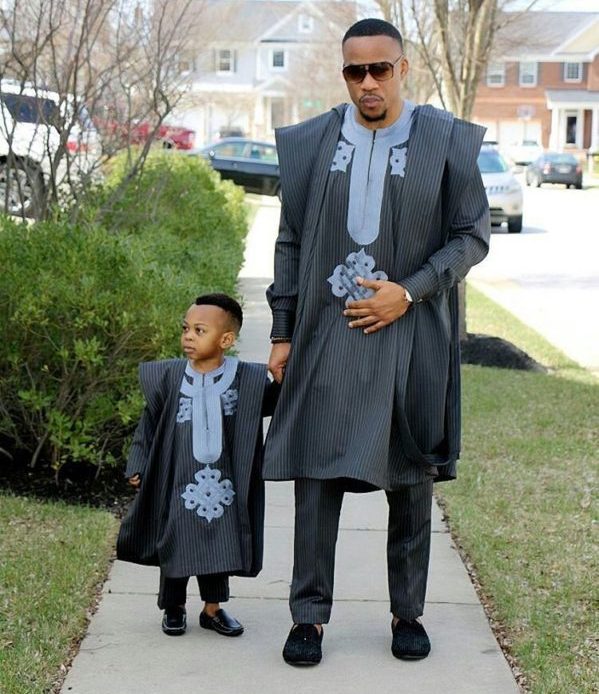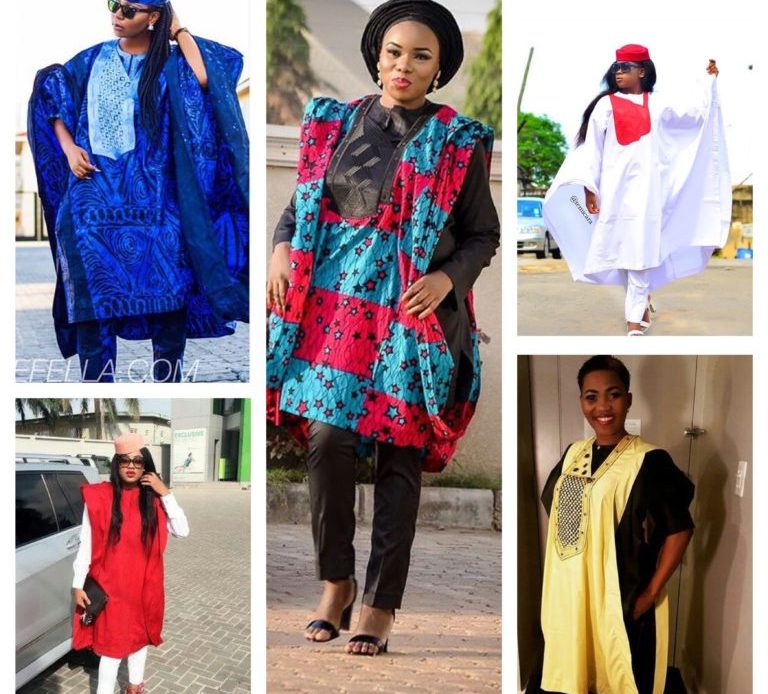Agbada

Agbada is one of the several names for a flowing wide-sleeved garment worn by Nigerian men, mostly in West Africa and some parts of North Africa. Agbada is popular with different names across a wide range of ethnic groups and languages that adopted it from its origin.
Agbada, which was originally Babban-Riga of the Hausa people of Northern Nigeria draws its origin from the clothing style of the Tuaregs, Kanuri, Toubou, Songhai, Hausa and other trans-Saharan traders who wore the robe primarily to protect themselves from the harsh temperature of the sun during the day and the snow-like temperature at night, while travelling across the Sahara Desert.
Read Also: Dashiki
In modern times, Agbada portrays style, elegance, class and is mostly worn by the Yoruba people of Western Nigeria, especially during the popular ‘Owambe’ ceremonies ranging from weddings to birthday parties and funerals. It is usually designed with intricate embroidery and is worn on other religious or ceremonial occasions like Eid-Festivals, weddings across all tribes and church services. More recently, Nigerian women seem to be in competition with the men, with their exclusive Agbada styles rocked with heels and a clutch to match.

The full Agbada attire includes three pieces of clothing – a pair of trousers called ‘sokoto’ in Yoruba, a long-sleeved shirt and a wide, open-stitched sleeveless gown worn over. The three pieces were mostly the same colour until recently when slayers started creating and following various brilliant styles in fashion and creative trends. In today’s style, the dress could match differently from the long-sleeve shirt and trousers.
Historically, Agbada was made from cotton and richly embroidered in traditional patterns, however in modern Yoruba society, it is made from different beautiful materials including Ankara, lace, Atiku, and synthetic materials.

There is a style pattern to wearing the dress, which typically follows the latest trends. An unfading trend is folding the open sleeves of the cloth over one shoulder while walking or before sitting down. Also, some prefer to wrap each sleeve over both shoulders in order to adjust the garment, giving it a slimmer look. However, it is very unpopular to see the style rocked with both sleeves down.
Agbada, which was preferred by royals, dignitaries and chiefs of the Yoruba tribe is now a major fashion trend among the ‘Yoruba demons’ and stylish ‘Arewa guys’ of the Hausa tribe. Men of the Eastern part of Nigeria are also not excluded as they have been spotted severally clinching amazing styles.
For males, the cloth goes well with the traditional neck and wrist beads which is commonly red and called ‘akun’ amongst the Yorubas, with a ‘fila’ known as cap in the English community. Some men prefer a well-polished leather shoe, suede or a pair of sandals. However, shiny leather shoes complement the dress well and gives wearers a stunning look.

Among women, Agbada is worn with a traditional bead, accessories and a nice heel to suit. Both men and women can add modern touches like sunglasses, gold/silver rings, jewellery and a bag, purse or clutch to match.
Have you ever rocked an Agbada before? Tell us some modern touches we missed out.
